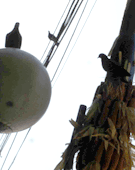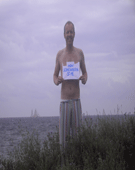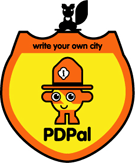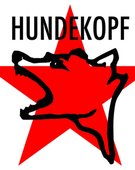///////////////description//////////////////// This is a site specific project created for the Centro Cultural Rojas’s “galeria del poste”, an art gallery that works in a lighting pole of the street in front of the center’s main entrance. I covered 3 meters of the pole’s surface with hybrid corns. This regular grid worked like pixels of an image modified by doves, humans and other urban fauna interacting and eating with different patterns.
/////////////Statement/////////////////////// The interactive corn A grid is composed by hundreds of corns. Most of them are hybrids; only a few are native varieties -richer in shape and colors-. Like pixels, each grain has a binary possibility: it could either be there or there could be a hole. Pigeons and other grey agents of the urban fauna will interact with this image eating it’s pixels and generating a new shape. Which aesthetic criteria will a dove’s that nests in the cornice of ...
Full Description
///////////////description//////////////////// This is a site specific project created for the Centro Cultural Rojas’s “galeria del poste”, an art gallery that works in a lighting pole of the street in front of the center’s main entrance. I covered 3 meters of the pole’s surface with hybrid corns. This regular grid worked like pixels of an image modified by doves, humans and other urban fauna interacting and eating with different patterns.
/////////////Statement/////////////////////// The interactive corn A grid is composed by hundreds of corns. Most of them are hybrids; only a few are native varieties -richer in shape and colors-. Like pixels, each grain has a binary possibility: it could either be there or there could be a hole. Pigeons and other grey agents of the urban fauna will interact with this image eating it’s pixels and generating a new shape. Which aesthetic criteria will a dove’s that nests in the cornice of a neoclassic building use when it has to eat? As well as the man has domesticated the vegetal kingdom with a minimal aesthetic -ordering grains in a way that the repetition and orthogonality are key patterns in order to be more productive-, he has also domesticated himself and his culture: we are what we eat. This reduction of peculiarities has been imported also from science laboratories to white cubes in art galleries. Both spaces are trying to be as neutral as possible to isolate experiments and pieces of art from the context. My interest with this piece is to generate an experience in the urban space with almost no control, no security guards, no walls, no white cube. What happens if we are trying to appreciate a work of visual art in the sidewalk when a trash truck is compressing waste in the street in front of us?
Work metadata
- Year Created: 2005
- Submitted to ArtBase: Wednesday Dec 21st, 2005
- Original Url: http://www.martinbonadeo.com.ar/exhibity.htm
- Permalink: http://www.martinbonadeo.com.ar/exhibity.htm
-
Work Credits:
- Martin Bonadeo, creator
Take full advantage of the ArtBase by Becoming a Member






